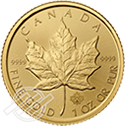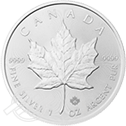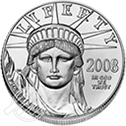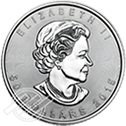What Is Junk Silver?
Junk silver coins are circulated U.S. coins, typically minted before 1965, that contain 90% silver. Contrary to its name, junk silver is not junk at all. Instead, they’re coins with no numismatic—a fancy word for collectible—value and derive their worth exclusively from their content of silver.
Confused? Well, think about it this way.
We’ve all come home from work, emptied our pockets of change, and tossed it atop a dresser or into a change jar.
That overflowing jug of old shiny pieces of money is probably filled with junk silver. You might be a silver collector without even knowing it.
If you dig through that jar and find any coins minted in 1964 or earlier, you could potentially sell them—not for their face value of 10 or 25 cents but for the value of silver in the coin.
Junk Silver History
Before 1965, the U.S. Mint made all dimes, quarters, 50-cent pieces, and dollar coins with silver. That’s why dollar coins are called silver dollars.
With the Coinage Act of 1965, the U.S. Mint changed its recipe. As a result, it eliminated silver from many coins and began manufacturing them with a mix of nickel and copper.
One of the main reasons for this change was the dramatic increase in the bullion value of silver coins compared with their face value. Speculators began to hoard and melt the coins, which caused imbalances in the coinage system.
While many pre-1965 coins have become rare and sell for a king’s ransom, most junk silver coins are in poor condition and of no interest to collectors.
Today’s Silver Coin Market
Today’s silver coin market is quite different, especially for those looking to invest in the Silver IRA. IRS guidelines for precious metal IRA storage require investors to purchase new coins. Although uncirculated and in perfect condition, this type of coin still derives its value primarily from its silver content and not collectability. The market refers to them as bullion coins.
The IRS has specific rules about which silver coins it approves for use in a precious metals IRA.
The Silver IRA—a popular investment vehicle used to own physical silver inside a retirement account—allows for newly minted bullion coins that are not numismatic. It doesn’t allow for the pre-1965 junk silver coins.
What does this mean for your jar of change? That potentially rare silver dollar coin, which may be worth hundreds of thousands of dollars to a numismatist, is not allowed in the Silver IRA.
Junk Silver Coins
People often ask where to buy junk silver and how to spot a junk silver coin. Generally, the term junk silver typically applies to any U.S.-minted silver coin manufactured before 1965. But, in technical terms, a junk silver coin is any government-issued silver coin intended for circulation but now solely valued for its bullion (meltdown value).
The coin’s date is the easiest clue to check. All dimes, quarters, half dollars, and silver dollars before 1965 can qualify as junk silver. Next, examine the coin’s edge. If the edge of a coin has a solid silver strip, it’s likely silver. If you only see traces of copper, the coin is probably 40% silver.
Here is a list of popular coins that were once in wide circulation but are now considered junk silver:
- Barber Dime (1892-1916): 90% silver, 10% copper
- Barber Quarter (1892-1916): 90% silver, 10% copper
- Roosevelt Dime (1946-1964): 90% silver, 10% copper
- Mercury Dime (1916-1945): 90% silver, 10% copper
- Kennedy Half Dollar (1964): 90% silver, 10% copper
- Franklin Half Dollar (1948-1963): 90% silver, 10% copper
- Walking Liberty Half Dollar (1916-1947): 90% silver, 10% copper
- Washington Quarter (1932-1964): 90% silver, 10% copper
- Standing Liberty Quarter (1916-1930): 90% silver, 10% copper
- Eisenhower Silver Dollar (1971-1974; 1976): 40% silver, 60% copper
- Morgan Dollar (1878-1904; 1921): 90% silver, 10% copper
- Peace Dollar (1921-1928; 1934-1935): 90% silver, 10% copper
Some coins on this list—such as the Roosevelt Dime, Kennedy Half Dollar, and Washington Quarter—are still in production and circulation today. Those coins, however, do not have the silver content of their junk silver cousins.
Is Junk Silver A Good Investment?
With so much junk silver out there in the world, maybe you’ve taken a second to consider if it’s worth not just digging through your existing change jar but also actively purchasing junk silver. Is it a good idea?
The simple answer? It’s up to you. Before you head out to the marketplace to buy some junk silver in bulk, consider speaking with an expert on silver coins. A professional can walk you through the options and help assess whether junk silver is for you.
As with anything, there are pros and cons to junk silver.
Pros
Some investors love the ease of junk silver for the following reasons:
- It’s fractional and easy to sell or purchase.
- You can use it as legal tender to make purchases today.
- It’s recognizable by almost everyone, coin enthusiasts and novices alike.
Because junk silver pieces are fractional, it is usually quite simple to liquidate a little at a time. That fractionality also makes junk silver easy to acquire, as an investor can buy the amount they can afford at that particular time without saving up for a large purchase.
In the worst-case scenario, you can still use junk silver in circulation to buy gas, groceries, and goods and services. It is still money when it needs to be.
Junk silver is almost universally recognizable by both collectors and non-collectors. When they see it, people seem to know a U.S.-minted coin, making junk silver a convenient tool to liquidate or barter with.
Cons
Junk silver has three issues that an investor may find detrimental:
- It is heavy and takes up a large footprint.
- It is expensive relative to other silver bullion.
- It is not Silver IRA eligible.
The most common complaint about junk silver is that it is heavy and takes up a lot of space. Think briefly about the massive volume and weight of thousands of coins. Depending on the value, it is not uncommon for a bag of junk silver to weigh 40 pounds or more. It can be difficult to store in a safe, safety deposit box, or vault.
Junk silver can be expensive relative to other silver bullion products. They typically cost more per ounce than American Eagle coins, simple bars, or even rounds, all of which primarily derive their worth from the melt value of the silver. That fractionality and ease come with a bit of a price.
Junk silver coins are not Silver IRA eligible. The IRS does not allow junk silver inside a self-directed individual retirement account. You may only hold newly minted, uncirculated coins in such accounts.
What Is Junk Silver Worth?
The value of junk silver slides up and down with the daily fluctuations in the spot price of silver. Remember, junk coins have one factor that affects their worth: the price established in the spot market on that given day. Nothing more. Nothing less.
How To Buy Junk Silver
If you’re dead set on buying junk silver, you can do so from various sources, including the following:
- Coin dealers: Specific coin shops or online retailers specialize in buying and selling coins, including junk silver.
- Auctions: You can buy junk coins, including silver, at auctions. In some cases, the auctions may feature rare coins and precious metals.
- Private sales: Collectors might buy junk silver coins from private collectors or via online marketplaces, including eBay and Craigslist. Be safe when making these purchases, and confirm the coins’ authenticity first.
- Online retailers: Many online retailers allow you to purchase junk silver coins.
How To Sell Junk Silver
Because the spot value of silver is readily available to a reputable precious metals dealer, selling junk silver is straightforward. You’d simply need to ship or take your bag of coins to the dealer, who would weigh them and calculate the value based on that day’s spot price.
Remember that a realistic value for your bag may be somewhat under the day’s spot price, as the liquidator may charge seller’s fees to make a small profit to keep its lights on and pay its employees.
Only accept a price that you feel is fair while also being fair to the purchaser. Everyone should feel like they made a good transaction.
We at Advantage Gold are happy to help you assess the value of your collection and liquidate your junk silver. Contact us today and start the conversation.
Tags: junk silver, junk silver coins, where to buy junk silver


